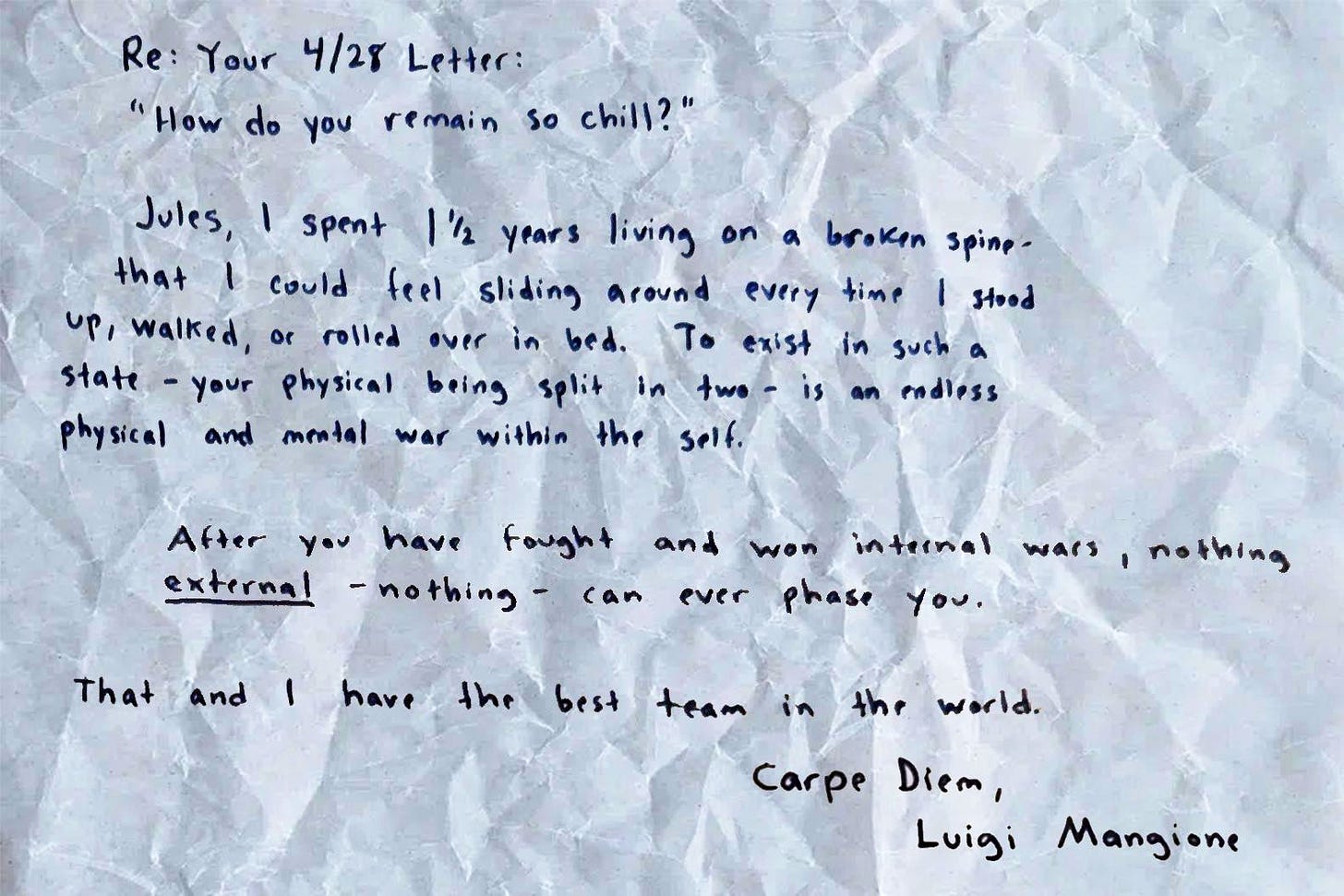Calmness as a quiet strength
Inertia — 215
Something I’ve mentioned before, and will say again, is that my father always said that no matter what, the sun will rise again. Anger is just energy. And so is fear, frustration, and anxiety. These emotions are separate from us. Not enemies to defeat, but messengers carrying information. The powerful thing isn’t never feeling them—it’s learning to listen without being consumed.
When I was younger, I had case after case that I still remember, where anger made it hard to listen. I was angry because, despite so many things in place that I can be thankful for, there was so much anger prancing through the world around me. It built pressure and pain until I started to break, which happened often, and in small bouts.
It was hard to understand then what I know now, but control is all about learning to hold something without letting it hold you. And so, bit by bit, I started to master it.
The internal war
We live in bodies built for survival, ancient warning systems firing at modern threats. The heart racing before a presentation. The tightness in your jaw from scrolling headlines or preempting a tense message from someone. The attack of pain when someone cuts you off in traffic, as if they’ve threatened your life, not just your schedule.
But here’s what no one tells you: staying calm is an active process, a muscle strengthened by many, many repetitions. It’s not a talent. It’s a war fought inside you, over and over, until you learn a new way to be.
Lifting weights and sports became my go-to because they mimicked this lesson. The burn, the strain. The build-up of lactic acid and hydrogen ions, turning into what we call pain, is a message from the body to say what you’re feeling is a friend, not an enemy; your body uses lactate and oxygen to create more energy from your internal fuel. Over time, with repetition, it takes longer for pain to build.
The paradox of strength is that you grow through controlled stress, sitting with discomfort and understanding the message. Emotional calmness works the same way.
The broken spine
Seeing one of Luigi Mangione's letters, his words about living with a broken spine for a year and a half, feeling it shift with every movement, revealed a message. "To exist in such a state, your physical being split in two—is an endless physical and mental war within the self."
From this fractured existence came a truth: "After you have fought and won internal wars, nothing external—nothing—can ever phase you."
Calmness is not only a feeling of fragile peace that only exists in perfect conditions. It’s developing an unshakeable centre that stands firm when pain builds and rumbles around it, when things on the outside seem to fall apart or test you.
Practice of peace
Somewhere along the way, we started believing that calmness should come naturally, that getting worked up means something is wrong with us. But agitation is the same muscle fatigue: a necessary part of growth.
When anger rises in my chest now, I don't try to suppress it. I breathe into these sensations the way you might breathe into a cramping muscle. I get curious instead. And slowly, what began as a conscious effort is quietly turning into my body's default response.
Like any practice, some days are harder than others. Work may pile up more, or a relationship may experience a new strain, or the world may seem determined to test every boundary; staying calm can take everything you have. But each time you choose breath over reaction, you’re laying down another neural pathway and teaching the nervous system a new pattern.
That’s why I say anger is just energy. Because day by day, breath by breath, we fight those many internal wars. And then one day, we look back and realise how often we’re winning each one.



